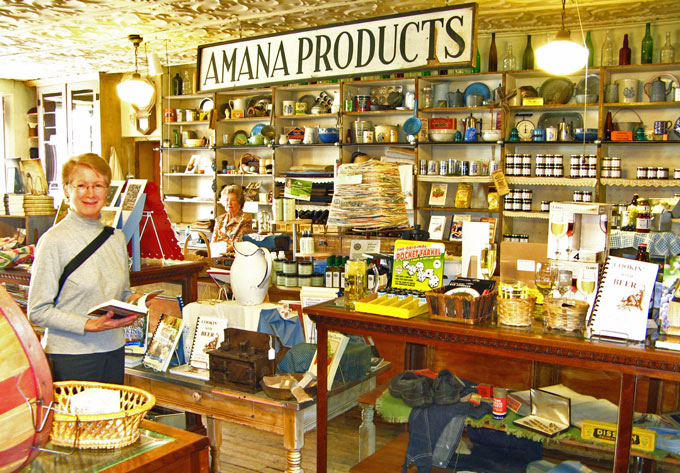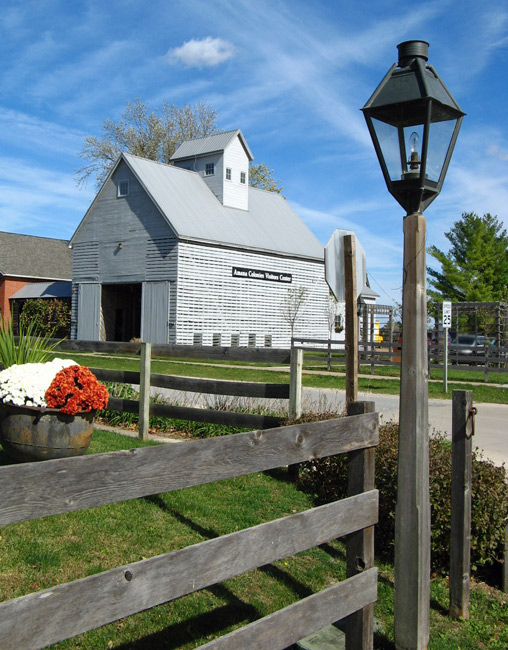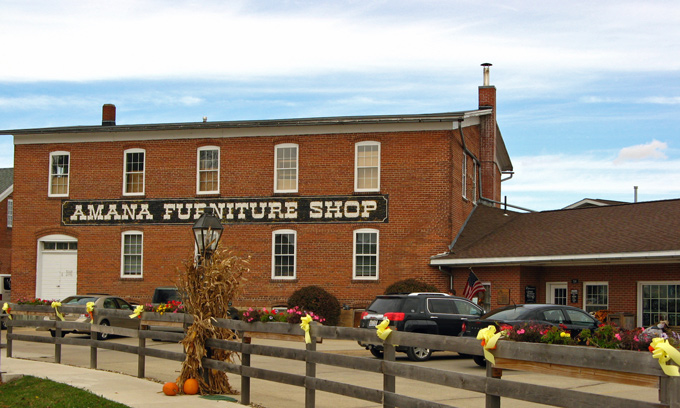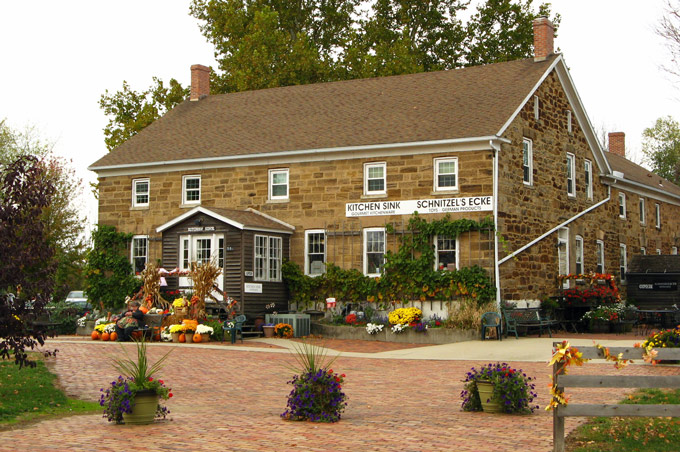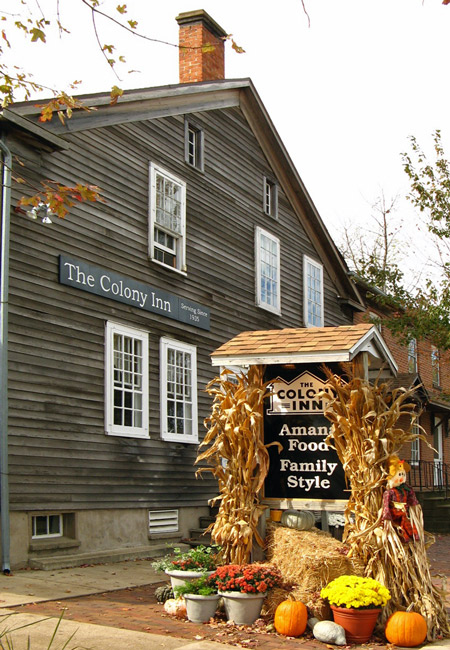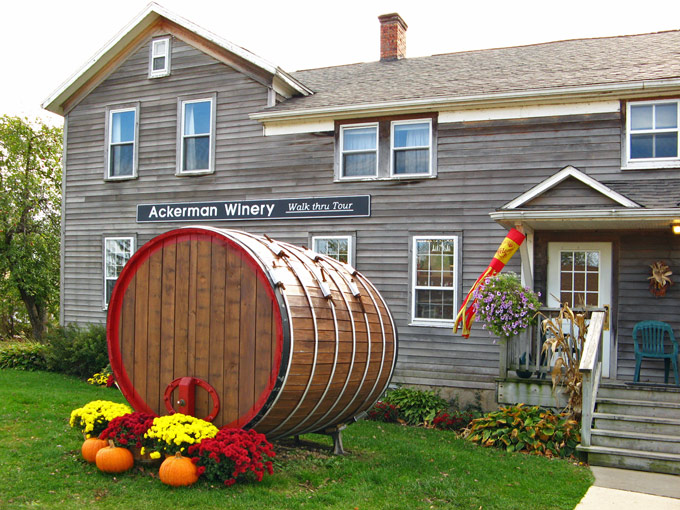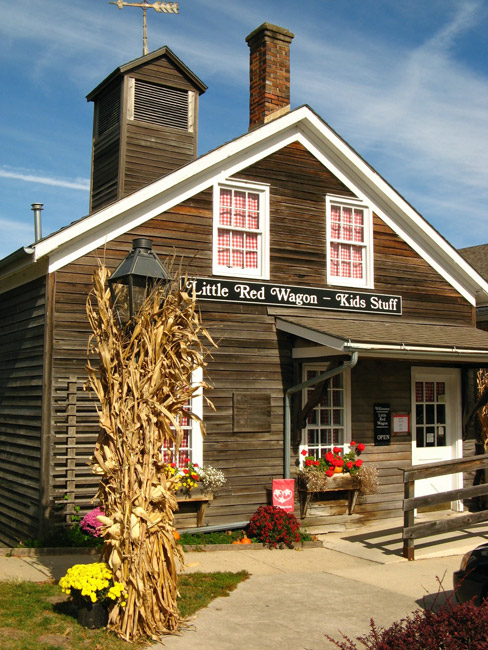The Amana Colonies stemmed from a German religious movement (circa 1714) preaching that God communicated through inspired individuals, just as He did in the days of the prophets. To live out their beliefs in isolated surroundings, the Amanas moved to Iowa (near Cedar Rapids) in 1855 and followed a communal lifestyle. Due to their way of living, the Amanas are sometimes mistaken for Amish.
Through the 1920s, their communal society was basically self-sufficient, providing each family what it needed. Regulations governed most aspects of daily life, including dining, dress, and leisure activities. Over time, though, these regulations began to chafe and, increasingly, became resented as petty and overly restrictive. Many young people wanted to be free to play baseball, to own musical instruments or to bob their hair in the latest style. Families wanted to eat together at home rather than in the communal kitchen dining rooms. Although members received an annual spending allowance, many felt theirs was inadequate and were frustrated by their inability to enjoy more material goods. Increasingly, the elders were unable to enforce the rules.
Communalism was formally abandoned in 1932, separating church functions from business pursuits. A joint-stock company, the Amana Society, was incorporated for business enterprises, to be operated for profit by a Board of Directors. Today, the Amana Society is corporate heir to the land and economic assets of communal Amana, continuing to own and manage all of its farm, pasture and forest land.
The most widely known business that emerged from the Amana Society is Amana Refrigeration, Inc., which is now a subsidiary of Whirlpool Corporation. Among other products, it manufactures refrigerators, freezers, ranges, and Amana microwave ovens.
With that introduction, the photos below should be virtually self-explanatory.

